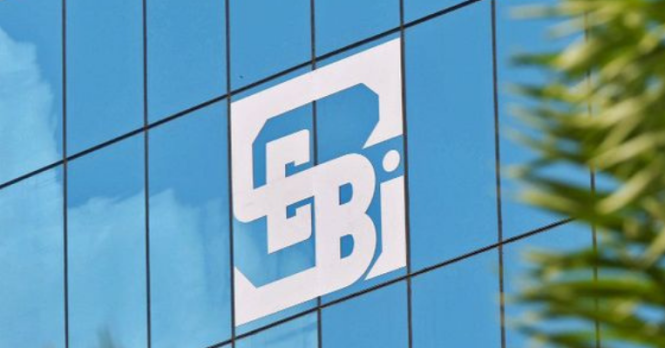SEBI---Securities-and-Exchange-Board-of-India
Stock Market Basics
The Securities and Exchange Board of India (SEBI) was established as the regulatory authority for the Indian securities market on April 12, 1992, by the SEBI Act 1992.
What is SEBI?
SEBI functions as a statutory entity under the Indian Government, coming into existence on April 12, 1992. Its primary objective is to enhance transparency within the investment market in India.
In addition to its central office located in Mumbai, the organization maintains numerous regional offices spread across the country, situated in key cities such as New Delhi, Ahmedabad, Kolkata, and Chennai.
History of SEBI
Before SEBI came into existence, the regulation of the securities market was handled by various government bodies, leading to inconsistencies and inefficiencies.
In 2014, the Indian government bestowed SEBI with expanded regulatory authority, empowering it to conduct search and seizure operations and impose more stringent penalties for market manipulation and insider trading.
Today, SEBI stands as a globally recognized regulatory authority, playing a pivotal role in the development and oversight of the Indian securities market.
Additional read : All about stock exchange.
Organizational Structure of SEBI
SEBI in India adheres to a corporate framework, boasting a comprehensive organizational structure that encompasses a Board of Directors, senior management, department heads, and several pivotal departments.
To delve into specifics, SEBI's structure includes more than 20 departments, each under the watchful eye of their respective department heads, who, in turn, fall under a broader hierarchical arrangement.
This hierarchical setup involves nine designated officers:
The Chairman – Appointed by the Indian Union Government.
Two members from the Union Finance Ministry of India.
One member from the Reserve Bank of India (RBI).
Five additional members – Appointed by the Union Government of India.
Highlighted below are some key departments within SEBI:
Information Technology Department
Foreign Portfolio Investors and Custodians
Office of International Affairs
National Institute of Securities Market
Investment Management Department
Commodity and Derivative Market Regulation Department
Human Resource Department
Apart from these, other vital departments oversee legal, financial, and enforcement-related matters.
Objectives of SEBI
SEBI holds the responsibility of overseeing the operations of the Indian capital market. As a regulatory authority, its primary goals are to supervise and control India's securities market, ensuring the protection of investors' interests.
The agency strives to foster a secure investment atmosphere by enacting various rules and regulations and crafting guidelines related to investments.
Additionally, a key objective is to prevent unethical practices within the Indian stock market.
Additional read : How does the stock market function?
Functions and Powers of SEBI
As a regulatory authority, SEBI is vested with significant functions and powers, as outlined in the SEBI Act of 1992. These powers empower SEBI to act as an overseer of securities issuance, a guardian of the interests of investors and traders, and a financial intermediary.
Functions of SEBI:
Safeguarding the interests of investors in the Indian securities market.
Fostering the growth and seamless operation of the securities market.
Regulating the operational aspects of the securities market.
Providing a regulatory platform for portfolio managers, bankers, stockbrokers, investment advisers, merchant bankers, registrars, share transfer agents, and other entities.
Supervising the activities of depositors, credit rating agencies, custodians of securities, foreign portfolio investors, and other participants.
Educating investors on securities markets and their intermediaries.
Prohibiting fraudulent and unfair trade practices within the securities market and its associated domains.
Monitoring company takeovers and share acquisitions.
Ensuring the efficiency and contemporaneity of the securities market through comprehensive research and developmental strategies.
Powers of SEBI:
SEBI possesses significant powers, and here are the key ones:
Judicial Authority in Fraud Cases: In instances of fraud and unethical practices within the securities market, SEBI India holds the authority to issue judgments. This power is instrumental in promoting transparency, accountability, and fairness in the securities market.
Examination of Accounts and Documentation: SEBI is empowered to scrutinize the Book of Accounts and other crucial documents to detect or collect evidence of violations. Upon identifying regulatory breaches, the body can enforce rules, pass judgments, and initiate legal actions against offenders.
Rule Formulation for Investor Protection: To safeguard investor interests, SEBI has the authority to establish relevant rules and regulations. These rules cover various aspects, including listing obligations, insider trading regulations, and essential disclosure requirements.
Combatting Malpractices: SEBI plays a pivotal role in formulating rules and regulations aimed at eradicating malpractices within the securities market.
Supervision by Higher Authorities: The powers and functions of SEBI are subject to oversight by the Supreme Court of India and the Securities Appellate Tribunal. These apex bodies review all functions and decisions of SEBI, ensuring a system of checks and balances.
Mutual Funds Guidelines of SEBI
The Regulations of the Securities and Exchange Board of India in 1996 outline the protocols for overseeing mutual funds in India. According to these directives, mutual funds are mandated to undergo registration under the Trusts Act of 1882.
For mutual funds exclusively dealing with the money market, registration with the Reserve Bank of India (RBI) is a prerequisite. The management of mutual funds falls under the purview of Asset Management Companies (AMC), requiring approval from SEBI. The trustees of the AMC hold the responsibility of ensuring the compliance of mutual funds with established regulations, including monitoring their overall performance.
SEBI India has laid down several regulations governing mutual funds, mandating compliance from sponsors, asset management companies, and shareholders. A glimpse of these regulations includes:
A mutual fund sponsor, a corporate group, or an affiliate of an AMC is restricted from holding 10% or more of the total shareholding and voting rights in either an AMC or another mutual fund. Moreover, an AMC is barred from representation on the board of any other mutual fund.
In an AMC of a mutual fund, a shareholder is prohibited from holding 10% or more of the total shareholding, whether directly or indirectly.
For sectoral or thematic indices, individual stocks cannot carry a weight exceeding 35%. In contrast, the cap for other indices is set at 25%.
The aggregate weight of the top three constituents of an index must not surpass 65%.
Regarding an individual constituent of the index, a minimum trading frequency of 80% is stipulated.
Each liquid scheme is mandated to allocate at least 20% to liquid assets like treasury bills, government securities, cash, repo on government securities, etc.
At the conclusion of each calendar year, mutual funds are obligated to adhere to guidelines issued by the Securities and Exchange Board of India. This includes the public disclosure of index constituents by publishing them on their respective websites.


